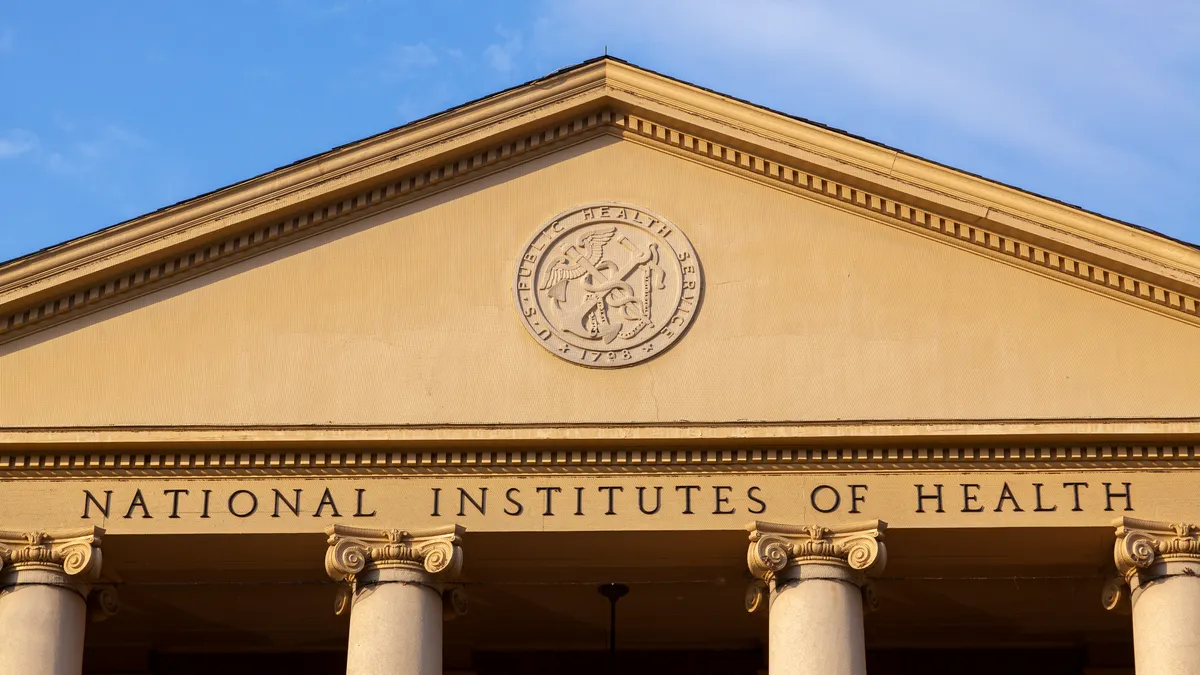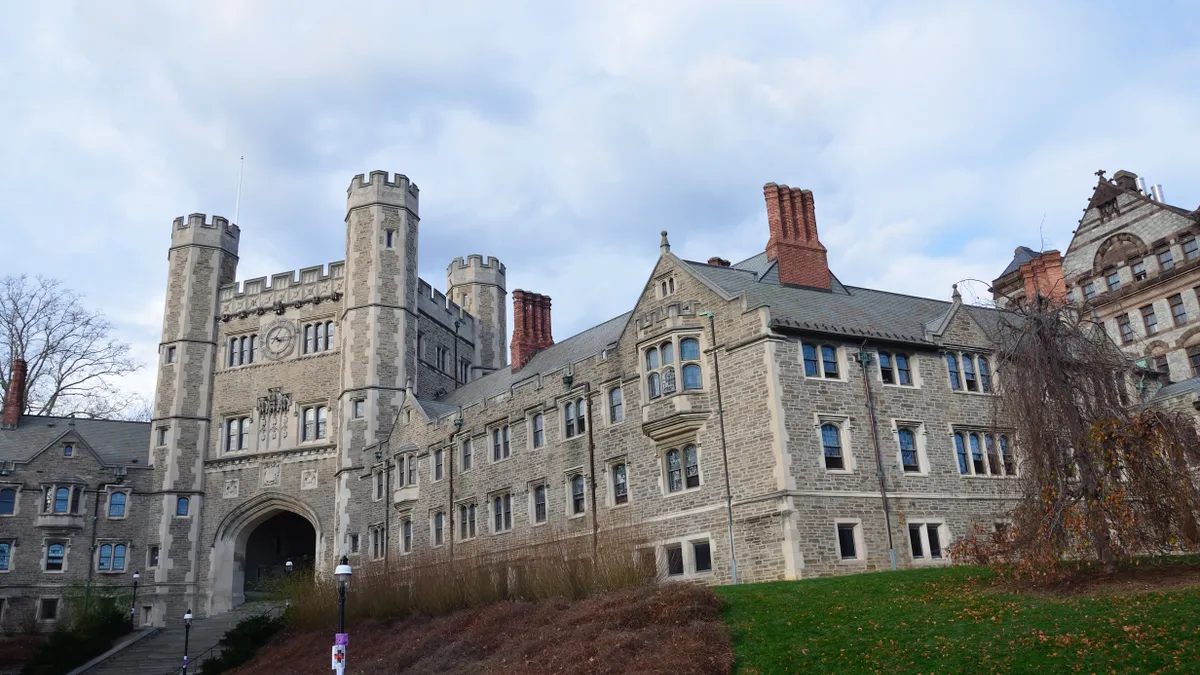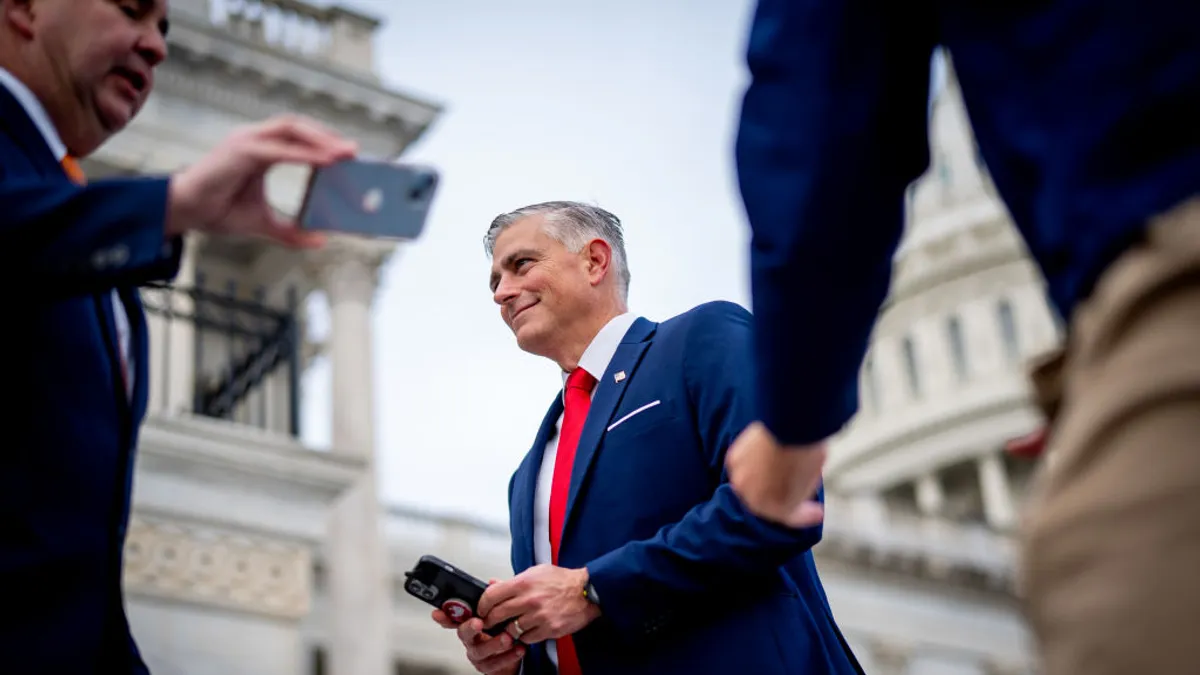When the small, nonprofit University of Saint Katherine announced it would close this spring, the president of the California-based institution placed partial blame for its cash crunch on “extraordinary inflation.”
Saint Katherine is hardly alone in that lament. Over the past few months, Pittsburgh Technical College, Delaware College of Art and Design, Wells College and Goddard College also cited inflation or rising costs when announcing decisions to fold their institutions.
Even colleges and universities on somewhat better footing are feeling the pain of inflation. A recent budget proposal by University of Minnesota’s interim president included some form of the word “inflation” 25 times, citing increased costs for food, services and labor, among other things.
While higher ed inflation slowed over the past year, costs for institutions sit well above pre-pandemic levels — injecting financial pressure, especially for colleges without deep pockets to weather the difficulties. Yet the need to invest in the institution remains an imperative, adding to the bind those colleges are in.
Now many are saying, in effect, “‘we can't cut any more expenses. We’ve got to invest in our people, invest in our staff, our facilities,’” said Timothy Yates Jr., president and CEO of Commonfund OCIO, which provides asset management services to higher ed institutions and other nonprofits. “The cost reduction piece of the equation has run its course.”
Calculating inflation for colleges
Over the past 40 years or so, higher education costs have diverged from those in the economy overall. That’s one reason why Commonfund Institute annually calculates its own metric for the sector, called the Higher Education Price Index, or HEPI.
Starting in the mid-1980s, the HEPI broke away from the Consumer Price Index, with costs for higher ed institutions rising at a higher rate than CPI for most years.
“We think it's more expensive to run a college and university, as opposed to running a family, though both are very important,” said George Suttles, executive director of the Commonfund Institute.
Some of HEPI’s largest components consist of personnel costs — salaries for faculty, clerical, administrative and service workers, as well as fringe benefits.
Suttles and Yates noted that colleges use the HEPI for budget planning. Endowment managers also use the metric to help set targets for investment returns, which typically need to account for inflation.
Determining the inflation rate that colleges are likely to face matters quite a bit, Yates said.
“Does your endowment need to keep up with heavy inflation, or does it only need to keep up with CPI inflation?” Yates said. “Most of the time, CPI does not reflect the cost structure of the colleges we work with.”
HEPI vs. CPI since 2000
Last year, higher ed institutions faced an inflation rate of 4%, according to the HEPI. That figure was down from 5.2% in 2022.
During 2022, nearly every area of cost tracked by the HEPI increased at a significantly higher rate than the year before. Some of the sharpest spikes came in supplies and materials, which were up 21.5%. Utilities, a historically volatile category, spiked by an eye-watering 43.1%.
For 2024, Commonfund Institute estimates that the HEPI will increase at 3%, which would put the measure back into the realm of normal higher ed inflation over the past decade. However, that also would mean that costs are still growing at a significant clip — on top of the recent spikes.
‘Your margin is shrinking’
Those cost spikes translate into added financial pressure for colleges and universities already dealing with enrollment declines, budget deficits and the like.
For colleges, inflation together with structural deficits can accelerate cash loss, noted Chuck Ambrose, a senior education consultant with law firm Husch Blackwell who has served as chief executive at several colleges.
The impact of rising costs is felt all the more deeply by smaller, non-elite colleges that lack the revenue base and endowments to absorb the pressure.
“Universities that are not hurting as much are the ones with endowments,” said Stacey Linderman, a consultant who works with the National Association of College and University Business Officers. “They have that to fall back on. And some of the other institutions, if they're not getting big gifts, that impacts them.”
Take the case of Wells College, in New York, which saw expenses grow as revenue wavered in recent years, all while running deficits. From fiscal 2021 to 2022, expenses jumped by just under 14.9%. They jumped again by 11% in 2023 while revenues declined by more than $1 million, or about 5.4%
During the recent years of skyrocketing inflation, businesses in other sectors responded to rising supply chain and labor costs by hiking prices to consumers to recover at least some of their lost margins.
But higher ed might not have that luxury — at least not at this point in history.
In a report last year, Fitch Ratings analysts pointed out that public institutions have held tuition flat and predicted that growth in private college tuition would soon abate. For the 2023-24 academic year, the ratings agency concluded that “muted” net tuition growth combined with “a challenging inflation environment” would weigh on margins.
That’s partly because costs for attending college are already painfully high.
“There is a decreased tolerance in the market for continuing increases in attendance costs,” Ricardo Azziz, director of the Center for Higher Ed Mergers & Acquisitions, said at a panel at the Higher Learning Commission’s annual conference this spring. “There is only so much that American families can pay, and we're reaching that peak price.”
With rising costs on the back end combining with flat prices on the front end, something has to give.
“Your margin is shrinking, or you're developing organizational efficiencies,” Linderman said.
And even when colleges are able to marshal their resources to invest in themselves, inflation can eat away at the impact of those investments.
“There is a decreased tolerance in the market for continuing increases in attendance costs.”

Ricardo Azziz
Director of the Center for Higher Ed Mergers & Acquisitions
Spending on facilities provides a vivid example. In 2023, investment in existing campus facilities grew more than 26% year over year, according to the building intelligence firm Gordian, which called the spending spike “a remarkable shift” for the sector.
This activity showed higher ed was chipping away at its backlog of deferred maintenance and taking care of its existing stock of buildings. At the same time, however, inflation in construction services and building supplies took a big bite out of that spending.
Operating budgets climbed more than 9.5% between 2019 and 2023, while the cost of building supplies and construction services grew 19%, according to Gordian.
“Buying power has effectively declined,” the firm said in a report earlier this year.
Is there any wriggle room left?
Along with the challenges in raising revenue, colleges may also be running out of costs to cut.
At the same time, trying to hold costs steady at an institution — where those costs are often in salaries and benefits — can create morale issues in the workforce, Ambrose said.
“It’s hard enough just maintaining operational integrity,” he added.
What, if anything, can colleges do to manage inflation at this point?
Given the complexity and specificity of cost structures, Linderman points to the importance of what she described as “forensic budgeting.”
That involves looking closely at spending on items against what they should cost or could cost, to see where savings might be possible, Linderman said.
Deep analysis, including with a third-party consultant, can sometimes identify areas where institutions are able to avoid costs, Linderman said. That could include cases where “you might not be saving today, but it's a cost avoidance for the next 10 years,” Linderman said. “That's really going to help your institution.”
Often, such strategic budgeting involves reviewing expenses in terms of potential alternatives, going over contracts with a fine-tooth comb, and looking into the nooks and crannies of an institution’s operations to see where money can be saved.
“Are we locked into something that we signed 10 years ago that's not beneficial to us anymore?” Linderman said. “Do we have cost saving ideas like, ‘Shut the lights off when you're not in the rooms,’ or, ‘Do elevator maintenance,’ so you don't let the elevator crash and spend a million dollars rather than $200,000?”
These ideas tend to be institution-specific, Linderman added. Depending on the college, costs can be hiding in information technology systems and contracts, or class sizes, or in legal risks that could become liabilities later, or any number of areas.
Colleges might also start looking outside the institution for help lowering costs. Ambrose said he anticipates that more staff will be replaced with artificial intelligence applications and technology, or through consolidation in the sector.
“The cost reduction piece of the equation has run its course.”

Timothy Yates Jr.
President and CEO, Commonfund OCIO
Endowments can provide relief as well — if an institution has a sizable enough one.
“The other lever that colleges and universities hold is fundraising and advancement,” Suttles said.
The larger, more sophisticated fundraising operations might try to structure gifts and payouts to provide “access to more of the real dollars” sooner, he noted.
Given higher ed's long history of high and steeply rising costs, fundraising has been used to hedge against inflation by providing scholarships and aid to students who can't afford the dizzying costs of attendance. In that sense, inflation is built into the fundraising process in the same way that it is into the return targets for endowments.
Colleges can appeal to donors with a pitch that highlights the effects of inflation, according to Suttles. They can say, in effect, “‘We're trying to make sure that this college experience is affordable for future generations,’ and that resonates with folks.”
Editor’s note: Ricardo Azziz writes a monthly column on mergers for Higher Ed Dive. His opinions are his own.
Clarification: This story has been updated to include additional context to Chuck Ambrose's comments about inflation's impact on college finances.






















